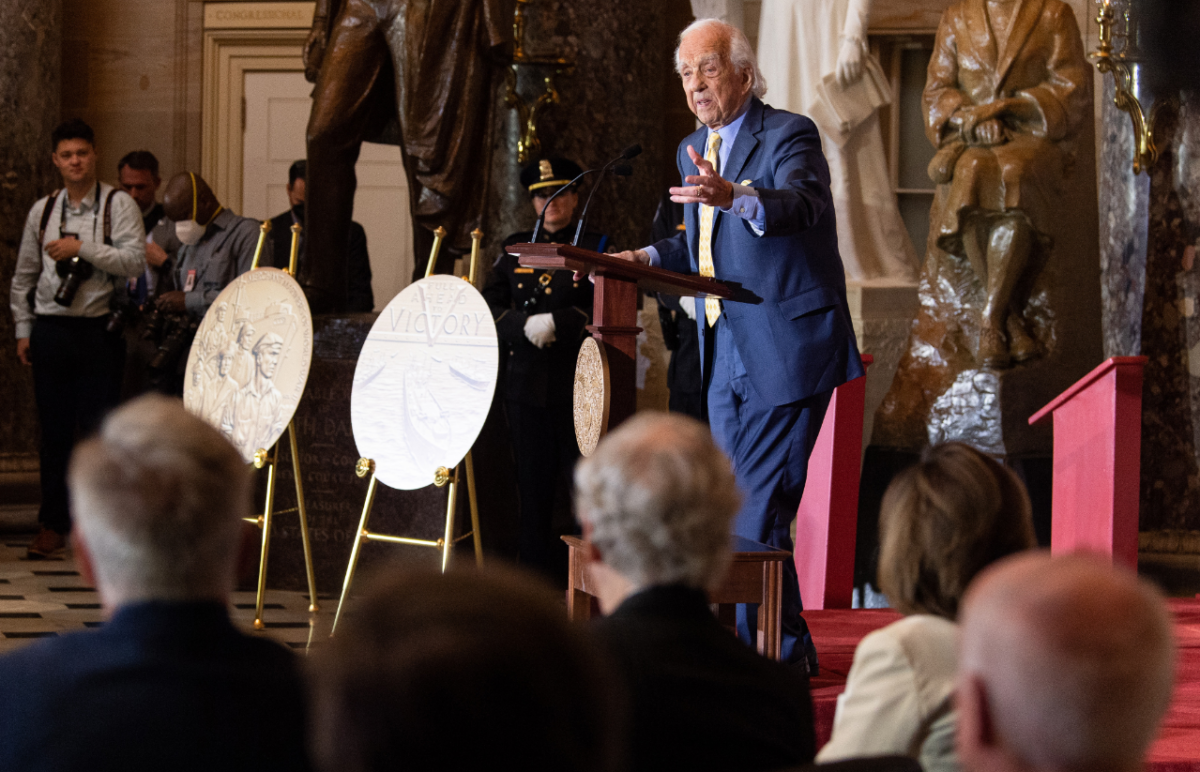FreightWaves Classics is sponsored by Old Dominion Freight Line — Helping the World Keep Promises. Learn more here.
As we prepare for the upcoming holiday weekend to celebrate Memorial Day, FreightWaves Classics memorializes a lesser known story of WWII but one that is just as important.
Last week, Tracks Through Time covered another hidden gem from World War II, the story of a battalion made up of all Black women who helped solve a postal problem that kept soldiers from speaking to their loved ones. This week we focus on the Merchant Marine, made up of civilian sailors whose job it was to transport supplies to war zones.
According to the U.S. Department of Defense, almost 250,000 civilian merchant mariners were part of the U.S. military. The National World War II Museum says that 9,521 of them died between 1939 and 1945.
There are countless stories of heroism throughout the war from this group of men, but one of the more important comes from the Battle of the Atlantic. The fight for control of the Atlantic sea routes, which British Prime Minister Winston Churchill believed to be Germany’s best chance to defeat the Allies, began in the fall of 1939, according to Britannica.
The Allies’ goal was to block the Axis powers, secure their own sea movements and maintain the ability to project military power across the seas, while Germany wanted to impede their war efforts.
There were numerous phases to the battle, with the Axis initially facing setbacks but gaining an advantage after the fall of France and Italy’s entry into the war. German U-boat attacks were particularly successful, but the Allies implemented measures such as convoy systems and received support from the United States and Canada. By 1943, improved tactics, technology and Allied control of the Atlantic resulted in a major defeat of Germany’s submarine fleet, ultimately leading to unchallenged control of the sea lanes by the Allies for the remainder of the war.
According to the Naval History and Heritage Command, between 1939 and 1945, 3,500 Allied merchant ships were sunk. However, the Germans lost 783 U-boats and approximately 30,000 sailors, three-quarters of Germany’s 40,000-man submarine force.
These heroes are lesser known in the history books, much like the women of the 6888 battalion. The U.S. Department of Defense says that these men did not receive benefits until 1988 from the Department of Veterans Affairs.
But in 2020, these men were recognized for their efforts as Congress passed the Merchant Mariners of World War II Congressional Gold Medal Act.
During the ceremony, House Speaker Nancy Pelosi quoted President Franklin D. Roosevelt, saying, “Their mission was the most difficult and dangerous transportation job ever undertaken.” The ceremony was held at the U.S. Capitol and attended by congressional and military leaders, as well as two of the World War II mariners — Charles Mills, 101, of Baltimore, and Dave Yoho, 94, of Vienna, Virginia.
The Congressional Gold Medal is on display in Kings Point, New York, at the American Merchant Marine Museum. Every surviving merchant mariner will receive a bronze replica of the coveted award. There are an estimated 12,000 mariners from WWII still alive.
Yoho, who enlisted at the age of 15, addressed the crowd during the ceremony, saying, “And so, when you’re with others, say to them of what we did, urge them to read about us and find out about us. Greet us today if you can [and] then say to those, ‘We gave up our yesterdays for your better tomorrow.’”
We appreciate these men and all who have served our country on this Memorial Day.
FreightWaves Classics articles look at various aspects of the transportation industry’s history. Click here to subscribe to our newsletter!
Have a topic you want me to cover? Email me at [email protected] or follow me on Twitter.










